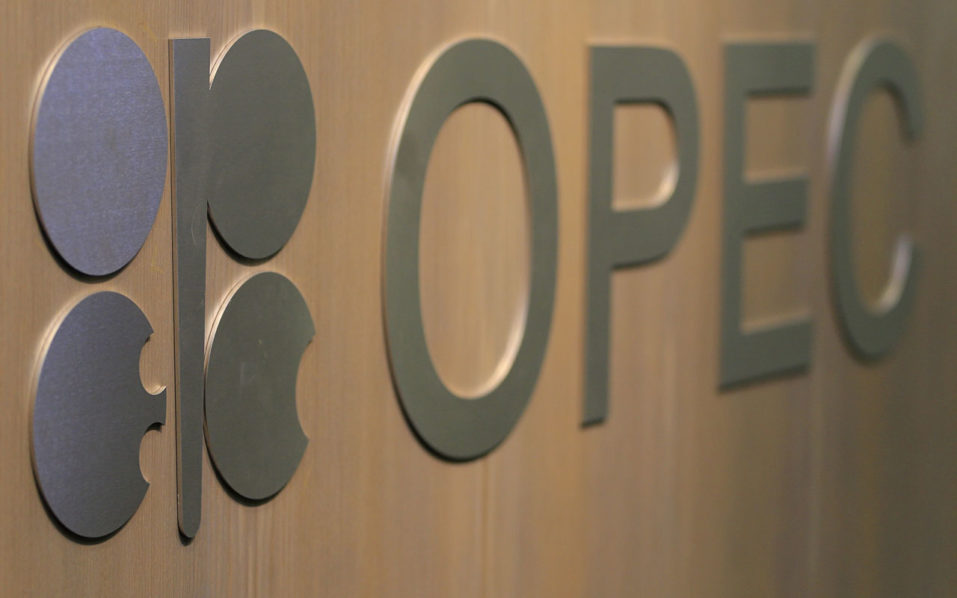- Developing Countries to Lead Oil Demand Growth Till 2040, Says OPEC
The Organisation of Petroleum Exporting Countries (OPEC) has said developing countries will lead oil demand growth in the next two decades.
In its 2017 World Oil Outlook launched in Vienna, the cartel said oil demand is expected to grow in the developing countries, especially Asian and the Middle East countries by almost 24 million barrels per day (bpd), to reach 67 million bpd by 2040.
The report said:“Total primary energy demand is set to increase by 35 per cent in the period to 2040 and oil is expected to remain the fuel with the largest share in the energy mix throughout the forecast period to 2040.
“Long-term oil demand has been revised upward by 1.7 million barrels per day compared to the World Oil Outlook of 2016, with total demand at over 111 million barrels per day by 2040. There is no expectation for peak oil demand over the forecast period to 2040.
“Developing countries will continue to lead demand growth, increasing by almost 24 million bpd to reach 67 million bpd by 2040. The long-term demand growth comes mainly from the transportation sector – road transportation (5.4 million bpd), petrochemicals (3.9 million bpd) and aviation (2.9 million bpd)”.
According to the report, oil demand in the road transportation sector is driven by the increasing car fleet in developing countries and declining oil use per vehicle in the Organisation for Economic Cooperation and Development (OECD) countries. The car fleet is anticipated to change smoothly over the forecast period. In the passenger car segment, electric vehicles are estimated to represent 12 per cent of the car fleet by 2040.
It said: “Non-OPEC liquids supply is forecast to increase from 57 million bpd in 2016 to 62 million bpd in 2022, but in the long-term non-OPEC liquids output is anticipated to see a decline, dropping to 60.4 million bpd by 2040, with United States (US) tight oil estimated to peak just after 2025;
“The demand for OPEC crude is anticipated to expand to 41.4 million bpd by 2040. The share of OPEC liquids in total global liquids supply is estimated to increase to 46 per cent by 2040, from 40 per cent in 2016.
“Around half of the estimated refining capacity additions are expected in the Asia-Pacific, which is projected to add 9.5 million bpd by 2040. Capacity rationalisation remains a long-term requirement, with some 6-8 million bpd of closures indicated as needed by 2040 if refining regions are to maintain utilisation rates of at least 80 per cent.
“Global crude movements are expected to increase by around 6.5 million bpd between 2016 and 2040, mostly supported by Asia-Pacific imports and Middle East exports. In the period to 2040, the required global oil sector investment is estimated at $10.5 trillion”.
Speaking during the launch, Director, Research Division of OPEC, Dr. Ayed S. Al-Qahtani, said: “The multi-faceted nature of the oil industry and the continued interdependence of all nations; the impact of the ongoing market rebalancing process, specifically on the medium-term outlook; that oil will remain a fuel of choice for the foreseeable future; that security of supply and security of demand are very much two sides of the same coin; and the importance of exploring and evaluating the possible challenges, uncertainties, as well as opportunities, the industry might face.”

 Forex3 weeks ago
Forex3 weeks ago


 Naira2 weeks ago
Naira2 weeks ago
 Billionaire Watch2 weeks ago
Billionaire Watch2 weeks ago




 Naira2 weeks ago
Naira2 weeks ago




 Naira2 weeks ago
Naira2 weeks ago




 Naira1 week ago
Naira1 week ago




 Naira4 weeks ago
Naira4 weeks ago




 Naira3 weeks ago
Naira3 weeks ago




















